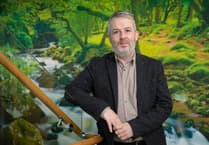Aberystwyth University scientists are helping to monitor the success of the reintroduction of Britain’s second rarest mammal.
A member of the mustelid family, which also includes weasels, stoats, badgers and otters, pine martens are similar in size to a small domestic cat. An elusive carnivore, they usually live in forested areas, where their diet consists mainly of small mammals, as well as fruit and berries.
Once widespread across Scotland, England and Wales, excessive hunting and habitat loss led to pine martens becoming one of Britain’s rarest carnivores.
Over the past decade, several reintroduction projects have successfully relocated animals from the relatively strong native population in the Scottish Highlands to suitable habitats in Wales and England.
Researchers from the Department of Life Sciences at Aberystwyth University are collaborating with Vincent Wildlife Trust to carry out molecular analysis of pine martens in Scotland and in areas where they have been reintroduced.
Using genetic tools specifically developed for the species, the Aberystwyth scientists will analyse pine marten hair and scat (droppings) samples collected by Vincent Wildlife Trust, from 15 pine martens translocated from their native population in Scotland and released in Devon last year.
Dr Niall McKeown from Aberystwyth University’s Department of Life Sciences said: “Our molecular analysis will allow us to determine the relatedness of the reintroduced individuals, while also allowing us to monitor the health of the source and donor populations.
“This information is vital for the conservation of this species.
“The scientific evidence provided by the study will present information and recommendations for the conservation strategy for this critically endangered species.”
Nadine Johnson, a postgraduate student from Aberystwyth University, said: “It is hoped that our research will help to ascertain whether the translocation of pine martens from one area to another results in viable and thriving populations in regions where they were previously extinct.”





Comments
This article has no comments yet. Be the first to leave a comment.